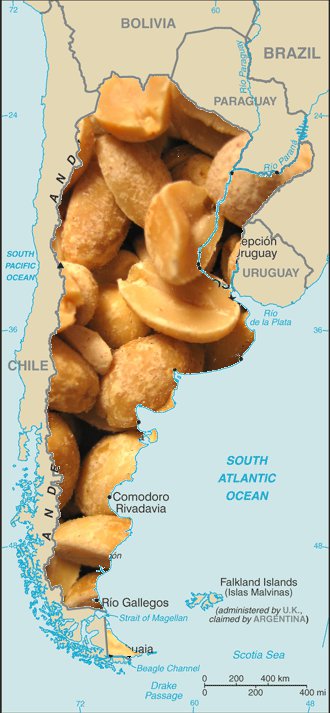Day 11 and 12- South American Peanut Butter
The Family Box of food made for six bulged the fattest with three boxes of cereal jutting high above cardboard walls that cradled a five-day supply of groceries.
Squinting at the 3-point type on the cereal boxes’ sides, I often felt like a food inspector  during my Food Bank shifts. While the other volunteers gossiped about their problem grandchildren or latest trip to Tahoe, I’d ask multiple questions about how to cook Asian vegetables or where the frozen chicken parts we were tearing and bagging came from.
during my Food Bank shifts. While the other volunteers gossiped about their problem grandchildren or latest trip to Tahoe, I’d ask multiple questions about how to cook Asian vegetables or where the frozen chicken parts we were tearing and bagging came from.
I admit the reason I started volunteering at the Food Bank wasn’t only to have something to make myself feel better after a challenging corporate writing job and an interminable commute. Yes, I wanted to feel needed and do something significant by helping feed the poor, but I also chose the Food Bank because I have developed a more than zealous curiosity about where food comes from, who doesn’t have it, and how it’s routed to them.
Working at the Food Bank hasn’t answered all those questions, but it’s given me invaluable glimpses.
For example, the boxes of cereal in the Family Box for six turned out to be from transnational and global sources.
- Kix, with its familiar goldenrod and blue colored box, was from the behemoth General Mills of Minneapolis, Minnesota.
- Coco Crazy, an ersatz Coco Puffs if you will, had a picture of a shy-bordering-on-smart alecky cartoon bear juggling (or was he kicking?) huge brown balls. It appeared to be from a budget food company out of DePew, New York
- Corn Flakes (no Michael Phelps mug here) was from a food brand called Pampa, a product of Argentina.
Argentina? I blinked as I looked at the label.
Eating local has been all a buzz, and even the Food Bank I work at brags about a gleaning program where fruit and vegetables harvested in residents’ backyards go directly to clients. In fact, more than 300 pounds have been donated to us from local trees and gardens since the Spring.
So to discover that Pampa, with its middle man a food distributor in Miami, Florida, also supplied peanut butter to us raised my eyebrows even higher.
Wasn’t there enough Skippy in the United States to go round?
The Food Bank has several programs to procure commodities so the food that makes them up mirrors our nation’s diverse supply, along with its import and export policies. A USDA program gives families with super low incomes even more cans of vegetables and bags of beans to supplement their Family Boxes, and it buys other perishables and non-perishables from the larger county food bank. Where the county buys food that isn’t donated I don’t know.
But when your client base has risen by 50 percent since 2008, it doesn’t matter where the food comes from – as long as it’s safe. There are sheets upon sheets of plastic-tubbed tangerine nibs drowning in syrup from China, and on the special Saturday shelf (where clients can choose exotics because, after all, it was the weekend) I spied stuffed peppers with rice from Bulgaria.
Discovering the Pampa peanut butter tapped my memory of my childhood best friend’s thrifty mother reveling in Lucky’s grocery store’s short stint with generic brands in the late 1970s. The Carter administration brought gas lines and being cheap was cool – although that wouldn’t last long.
At my house we got brand name Coca-Cola, but I was intrigued by the novelty of the Harris’s generics – not necessarily because of the taste. The products were wrapped in bumble bee yellow packaging with at least 18 point type bold black lettering, taking all the commerciality out of peanut butter, hot chocolate and tuna out, but lending some frugal sexiness, at least in my 9-year-old mind.
The next day at the Food Bank, as I grabbed a dust pan from an abandoned corner, I did discover some Skippy waiting to be put into the Family Boxes. I swept up with a little more faith in the United States of America.
###